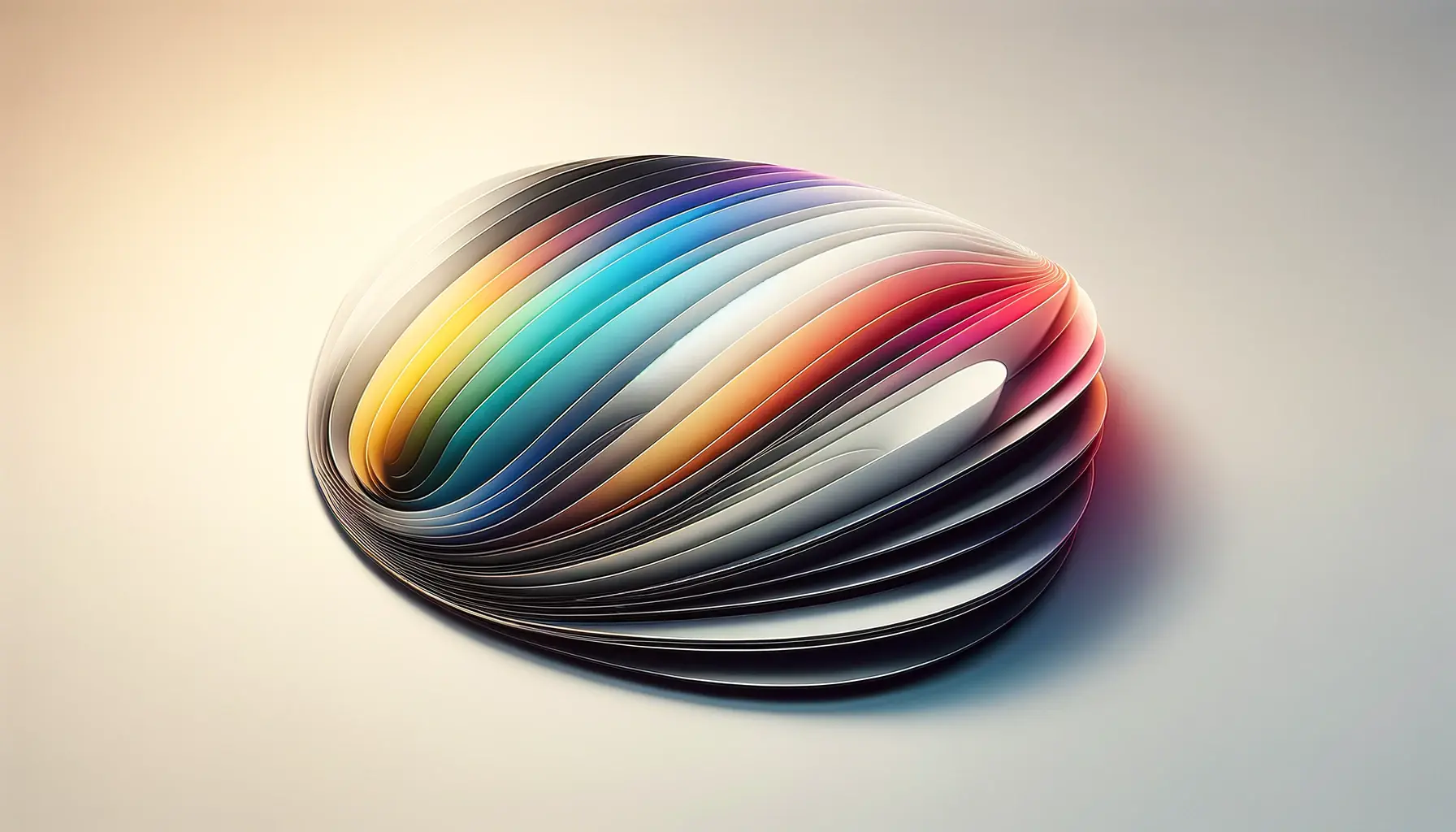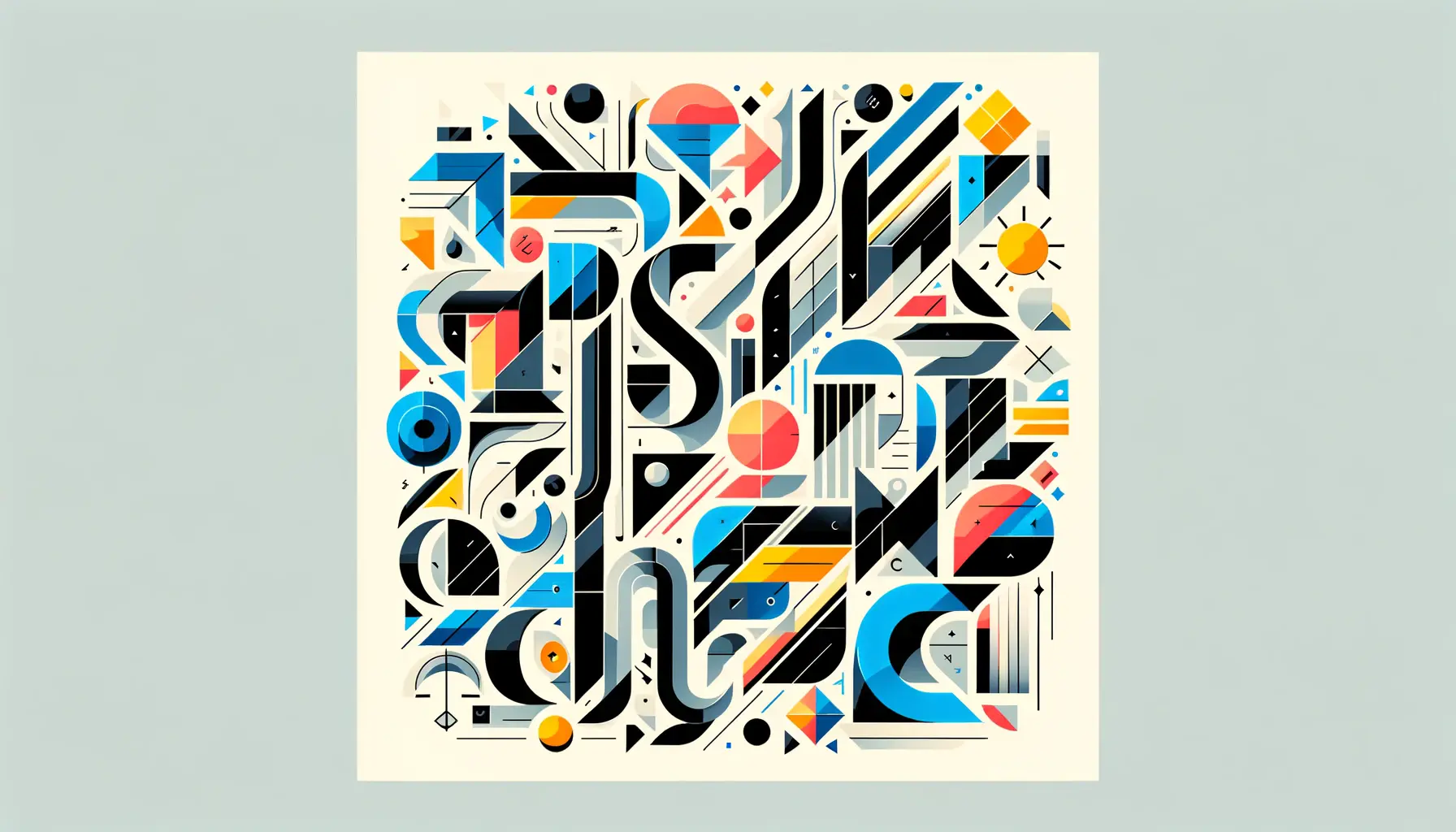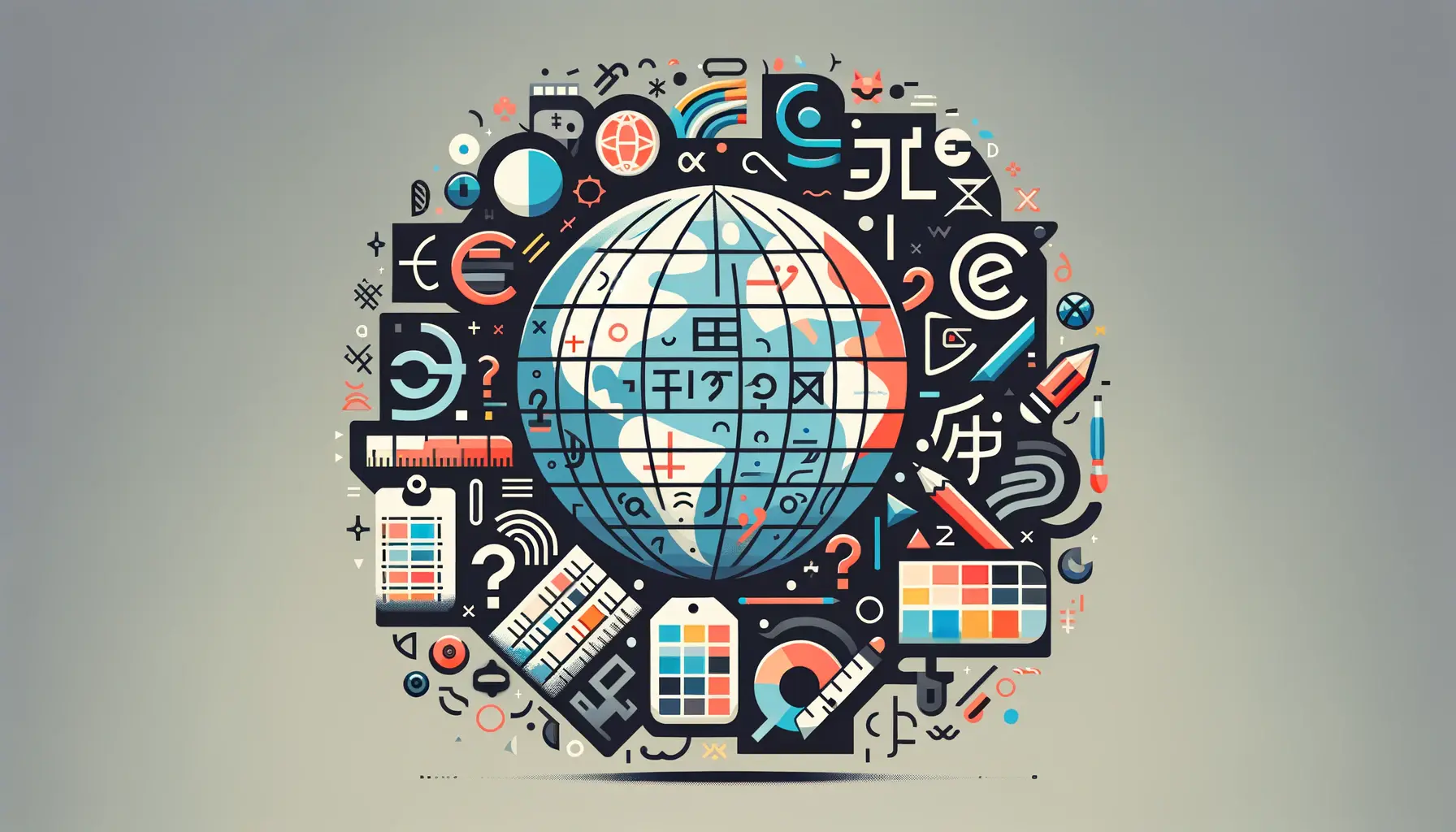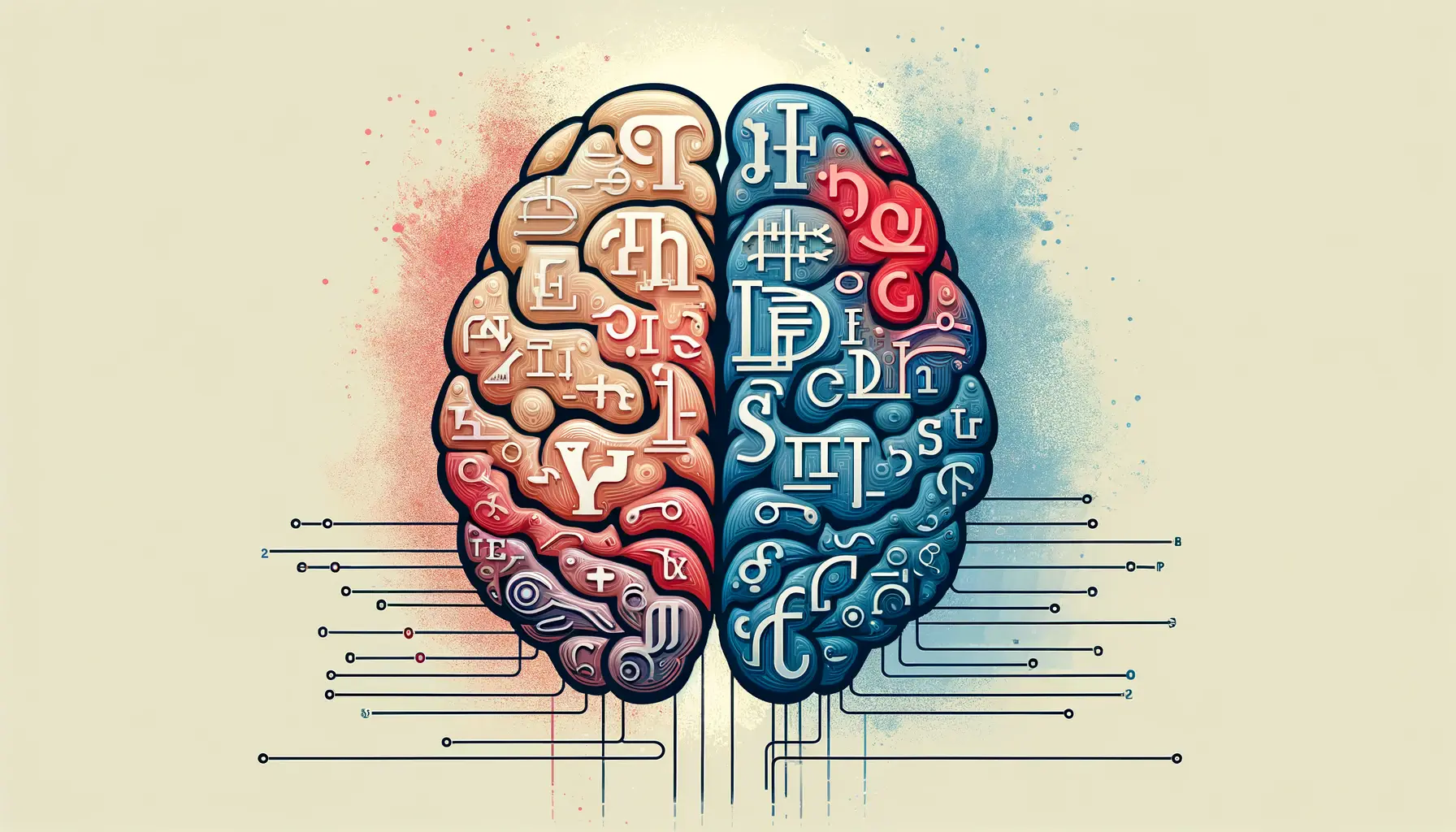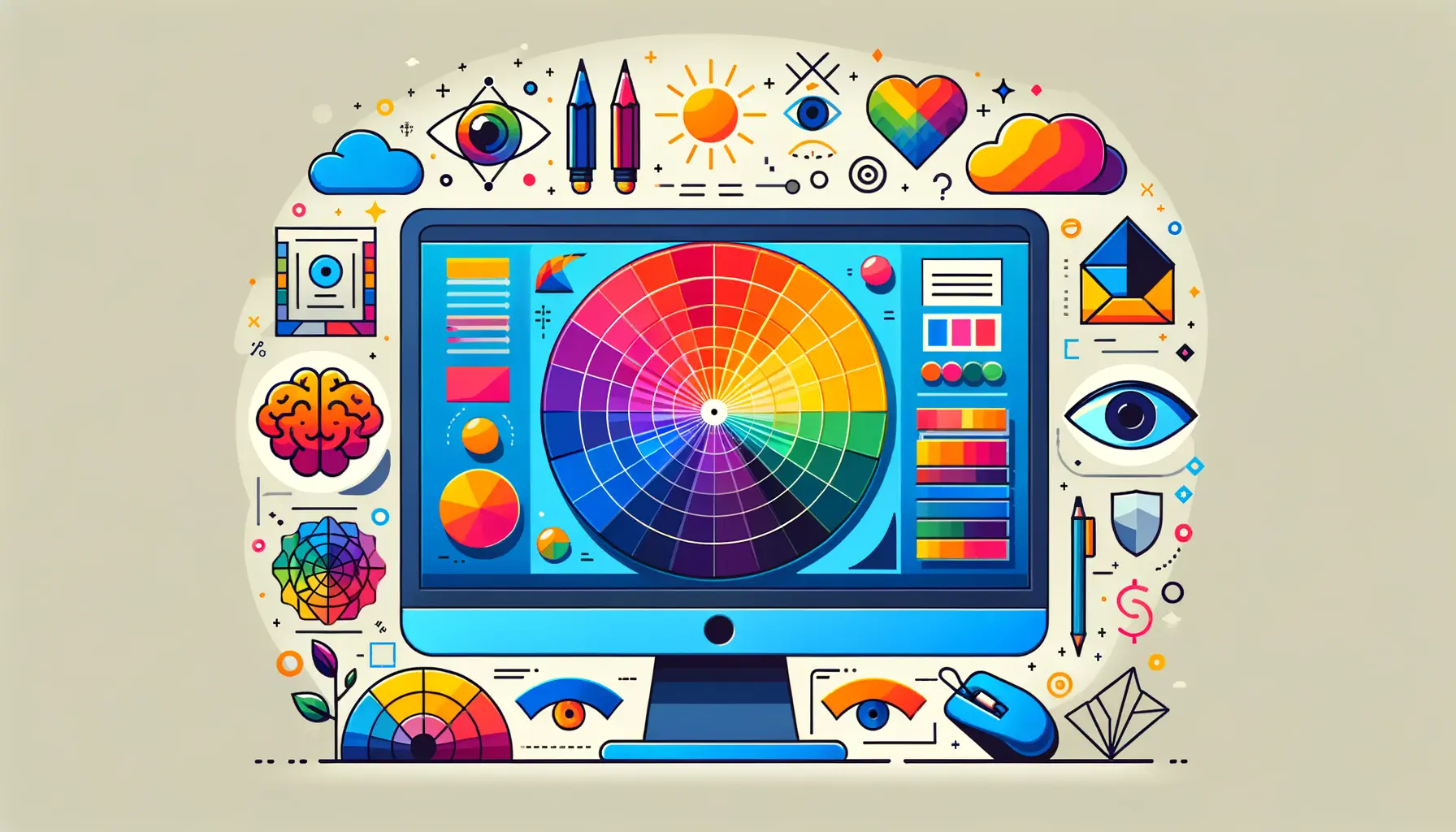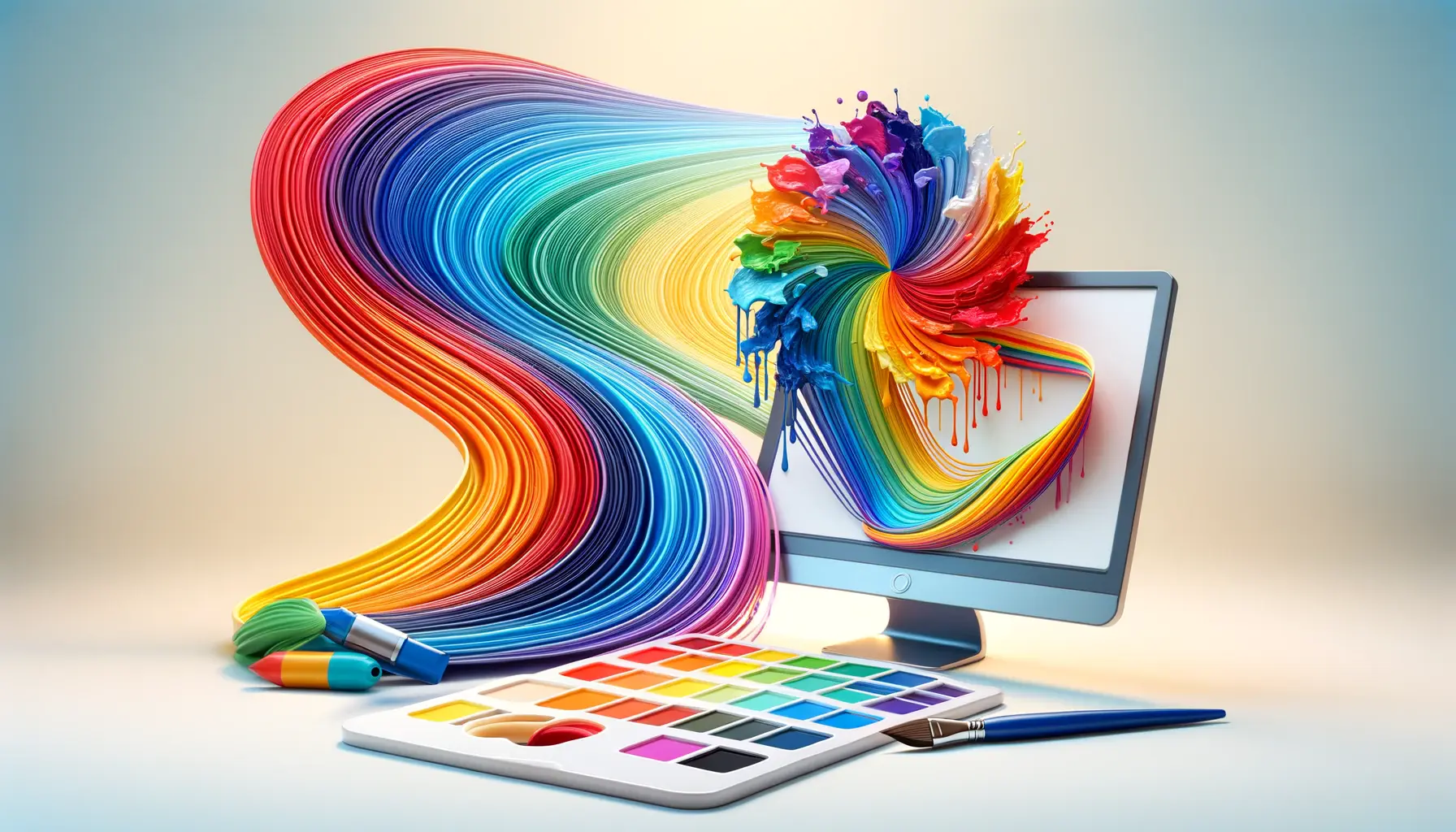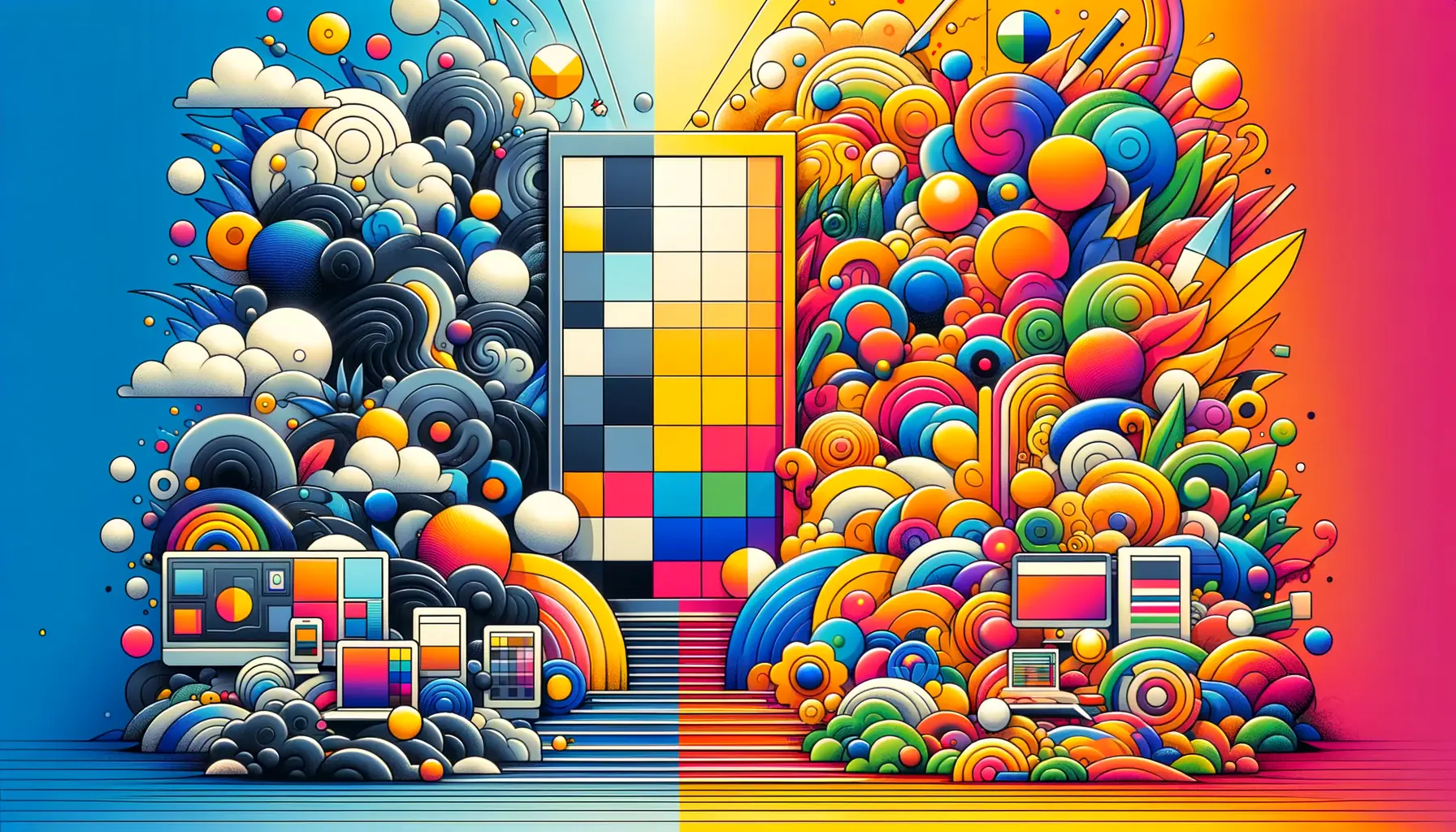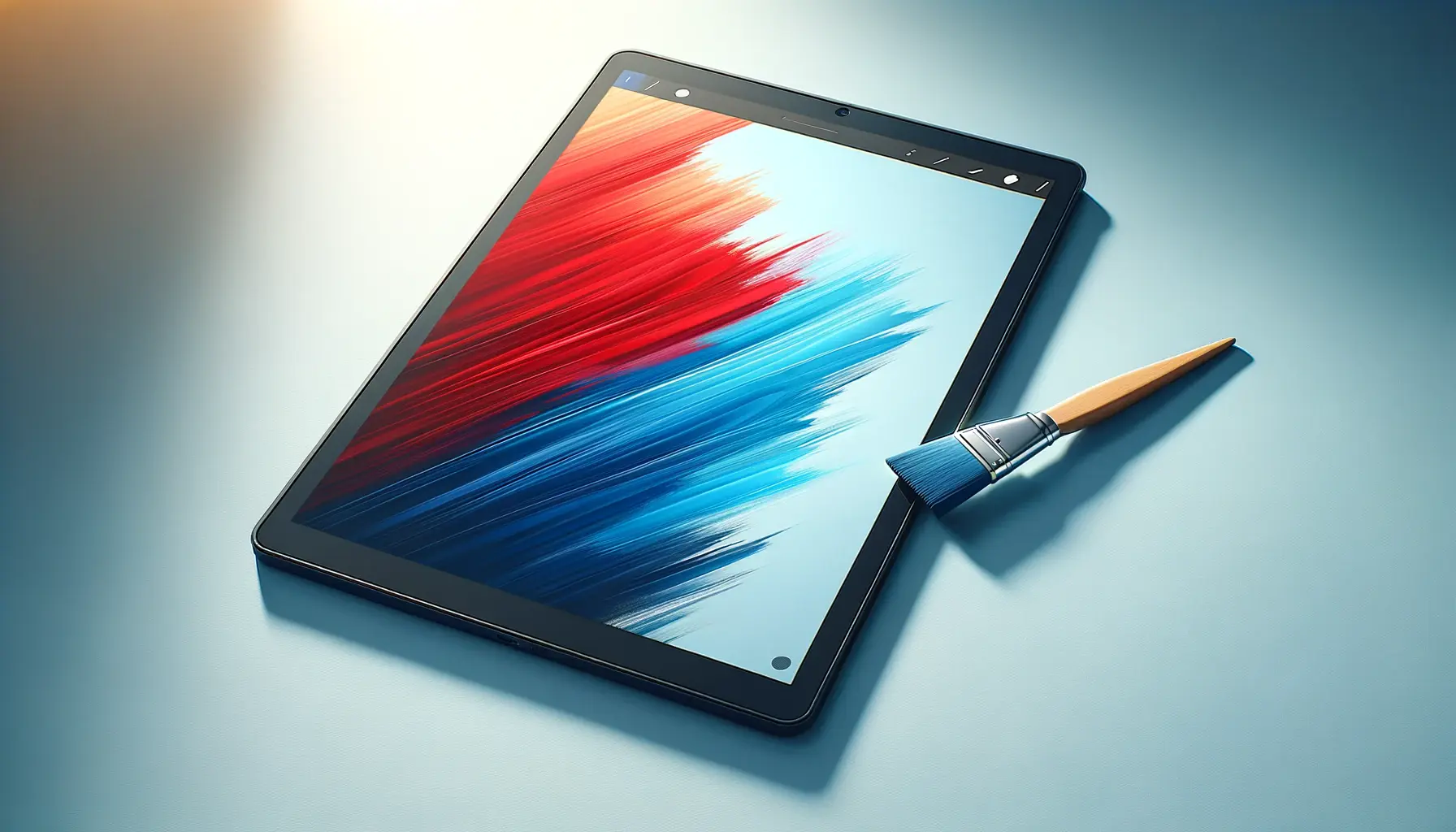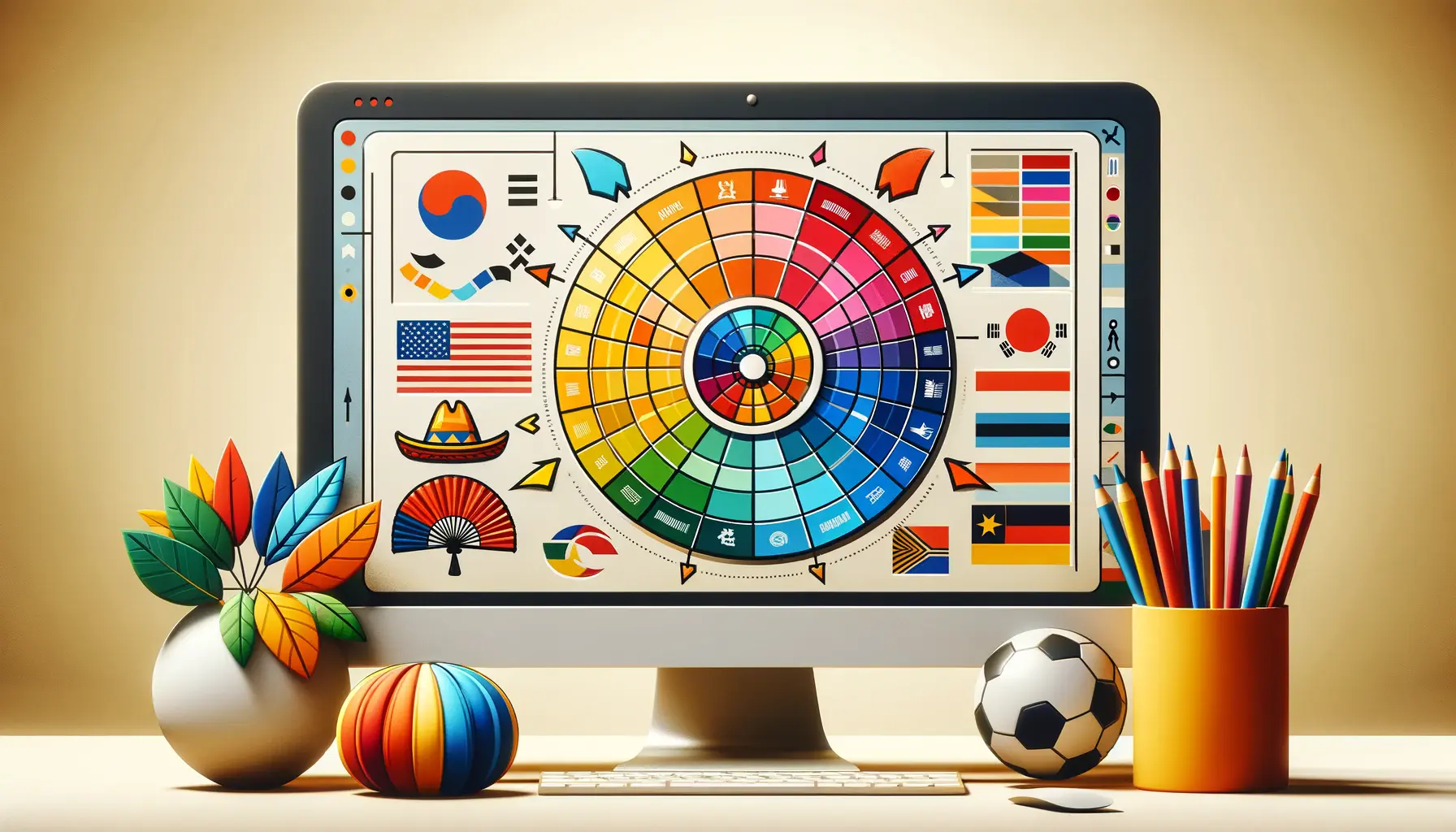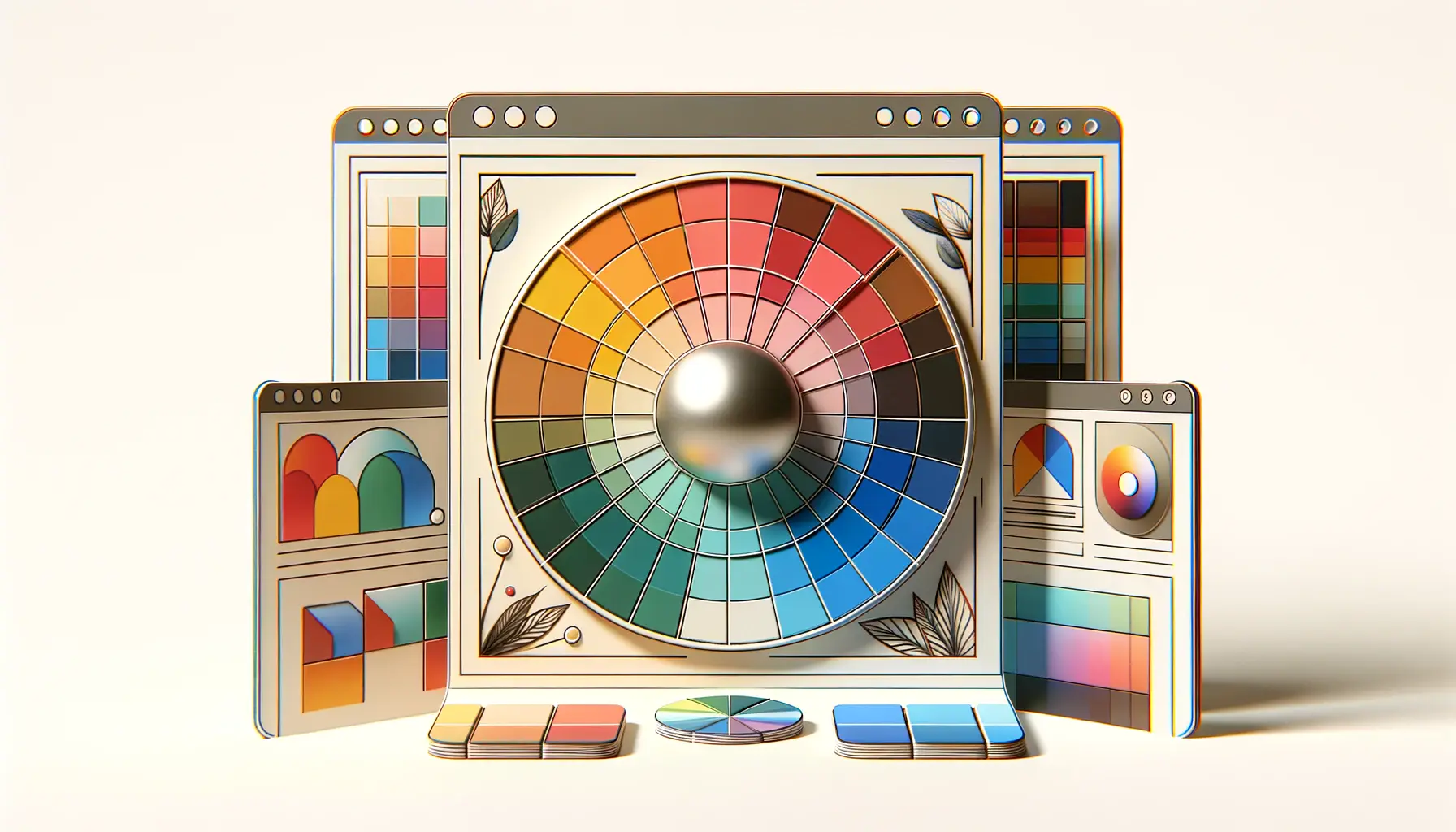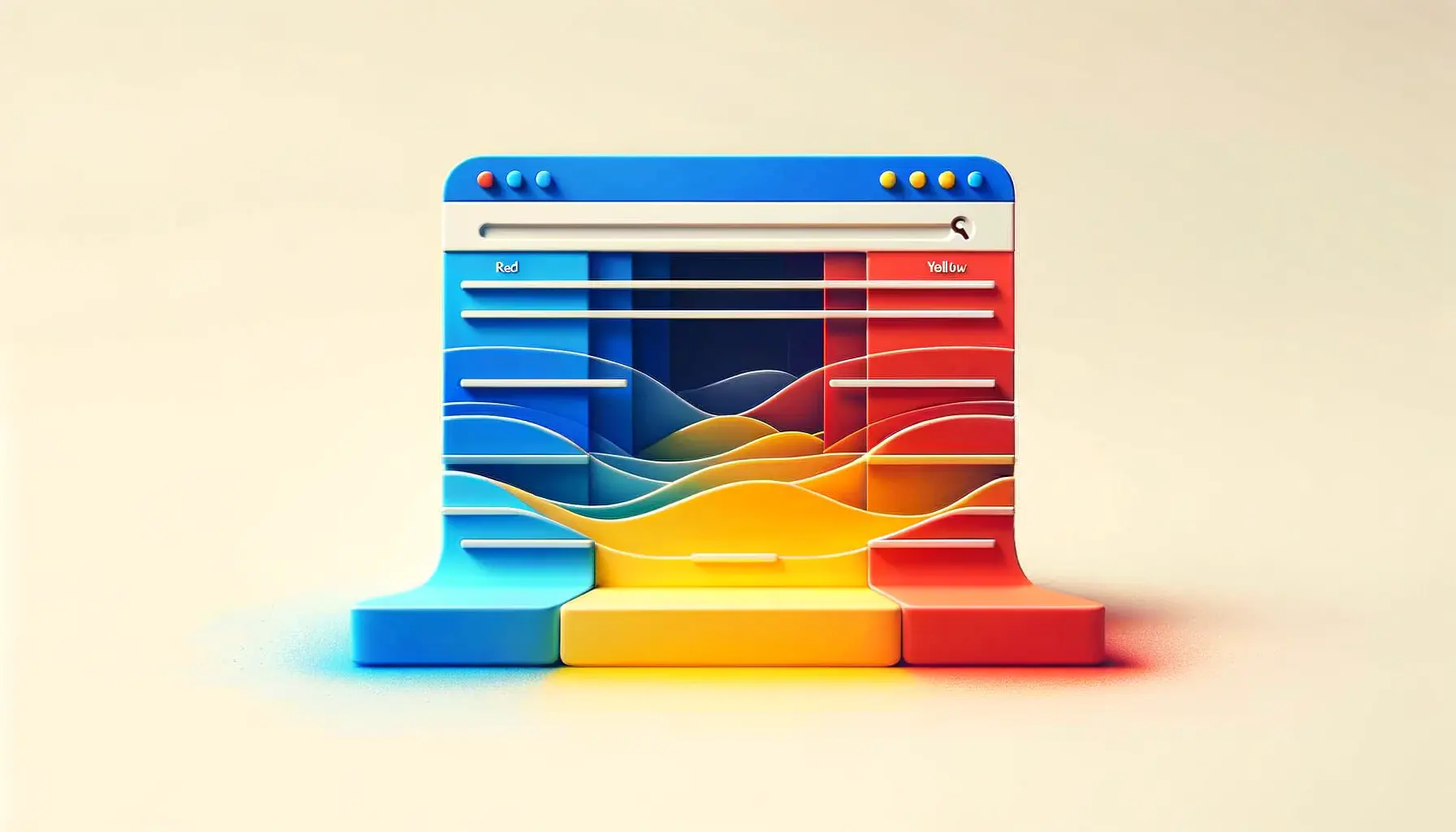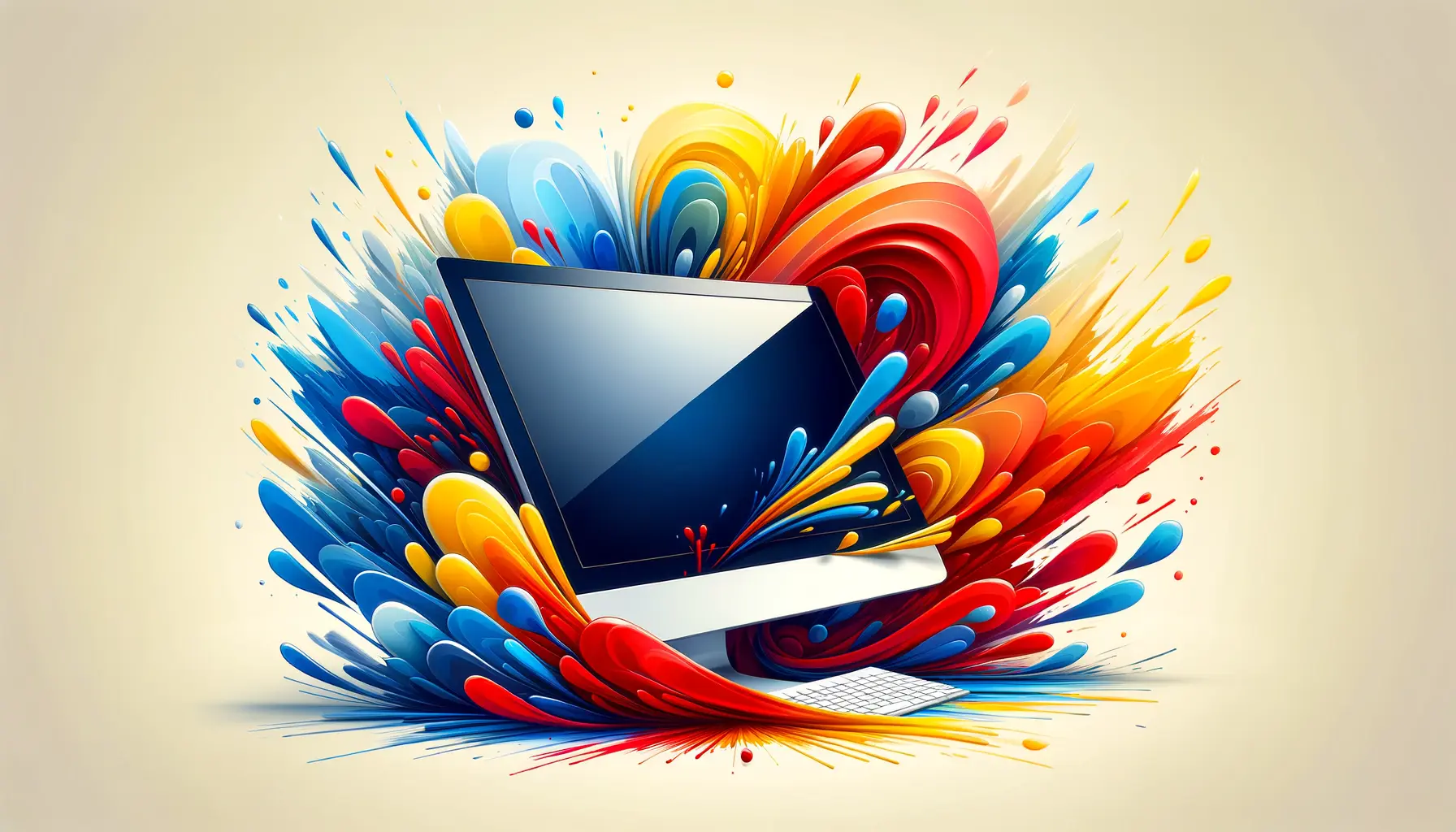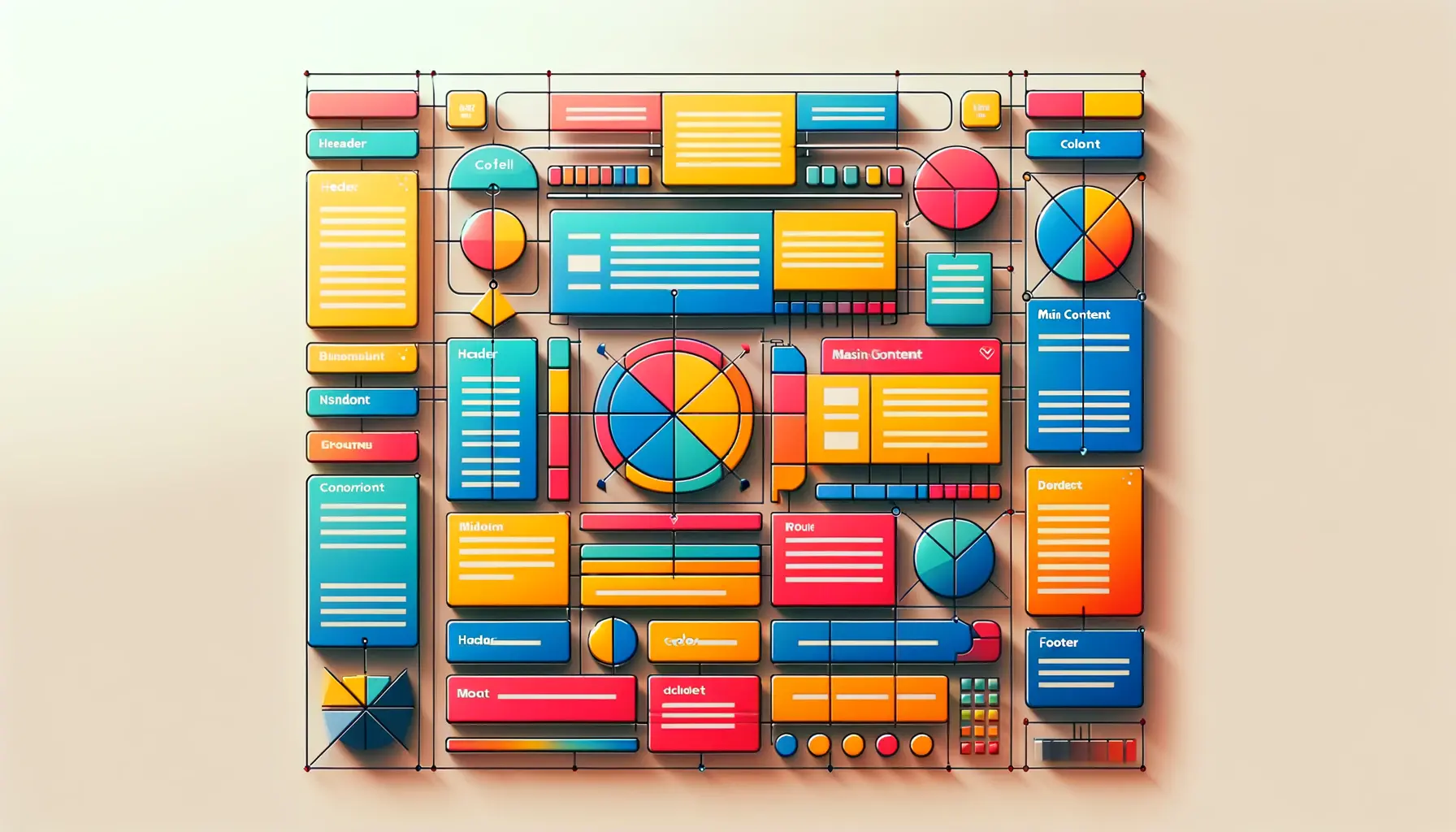The digital landscape is perpetually evolving, with web design at its core undergoing transformative changes that redefine how we interact with the online world.
As we delve into the future of web design, one aspect that consistently captures the imagination of designers and audiences alike is the use of color.
Color not only enhances the aesthetic appeal of a website but also influences user behavior, emotions, and brand perception.
In this exploration of future color trends in web design, we aim to uncover the hues that will dominate the digital realm and how they will shape the user experience.
Understanding the significance of color in web design is crucial for predicting its future trends.
Color theory, an essential pillar of design, teaches us that colors can convey messages, evoke emotions, and even affect decision-making.
As technology advances and cultural shifts occur, the colors that resonate with users today may evolve to reflect the changing digital environment.
This article will guide you through the emerging color trends in web design, offering valuable insights into how these colors will influence the future of digital aesthetics.
- The Evolution of Color Trends in Web Design
- Emerging Color Trends and Their Psychological Impact
- Integrating Color Trends with Brand Identity
- Color Accessibility and Web Design
- Color Psychology in Marketing and Branding
- Future-Proofing Design with Sustainable Color Choices
- Adapting to User Preferences: The Role of Color in Personalization
- Envisioning the Chromatic Future: The Evolution of Color Trends in Web Design
- FAQs: Future of Color Trends in Web Design
The Evolution of Color Trends in Web Design
From Past to Present: A Colorful Journey
The history of color in web design is a vivid narrative of technological advancements and changing user preferences.
In the early days of the web, designers were limited to a basic palette due to technological constraints.
However, as technology progressed, so did the spectrum of colors available for web design.
This expansion allowed for more creative freedom, enabling designers to experiment with color schemes that were once beyond reach.
The transition from Web 1.0 to Web 2.0 marked a significant shift in design philosophies, with a greater emphasis on user experience and aesthetics, paving the way for the rich, immersive color palettes we see today.
Recent years have seen a preference for bold and vibrant colors, a trend driven by the desire to stand out in a crowded digital space.
Brands have increasingly turned to unique color combinations to capture attention and convey their identity.
This era has also witnessed the rise of gradients and duotones, adding depth and dimension to digital designs.
As we move forward, the evolution of color trends in web design continues to be influenced by cultural, technological, and psychological factors, leading us into uncharted territories of color experimentation.
Technological Innovations Shaping Color Trends
Technological advancements play a pivotal role in shaping the future of color trends in web design.
The development of high-definition displays and sophisticated design software has enabled designers to use colors in ways that were previously impossible.
These technologies have given rise to hyper-realistic designs with vibrant colors that pop off the screen, offering a more engaging user experience.
Furthermore, the advent of augmented reality (AR) and virtual reality (VR) in web design is set to revolutionize the use of color, allowing for more immersive and interactive experiences that can transport users to different worlds.
Another technological factor influencing color trends is the increasing importance of accessibility in web design.
Designers are now more mindful of color contrast and readability to ensure that websites are accessible to everyone, including those with visual impairments.
This focus on accessibility is leading to the adoption of color schemes that not only look good but are also functional and inclusive.
The future of color trends in web design is a dynamic interplay between technological innovation, cultural shifts, and a deep understanding of color theory. As we look ahead, it’s clear that color will continue to be a powerful tool in creating meaningful and memorable digital experiences.
Emerging Color Trends and Their Psychological Impact
The psychological impact of color on web design cannot be overstated, as it directly influences user engagement and perception.
As we venture into the future, understanding the emerging color trends and their psychological implications will be paramount for designers aiming to create compelling and effective websites.
Let’s explore some of the color trends poised to make a significant impact in the coming years and how they resonate with users on a psychological level.
One of the most exciting aspects of predicting color trends is observing how they reflect societal changes and technological advancements.
Colors that evoke a sense of security, optimism, and innovation are likely to dominate the web design landscape, catering to users’ evolving needs and emotions.
Here are some key color trends to watch:
- Luxurious Neutrals: Moving away from the stark minimalism of black and white, luxurious neutrals such as warm greys, soft beiges, and muted golds are set to create serene and sophisticated digital spaces. These hues offer a sense of calm and stability, which can be particularly appealing in times of uncertainty.
- Vibrant Pastels: Pastel colors with a vibrant twist, like bright lavenders and mint greens, are expected to gain popularity. These colors combine the softness of pastels with a dash of energy, evoking feelings of creativity and playfulness.
- Deep Blues and Greens: Deep, saturated blues and greens are anticipated to convey reliability and growth. These colors can create a sense of trust and professionalism, making them ideal for websites in the finance and technology sectors.
- Earthy Tones: As environmental awareness continues to grow, earthy tones like terracotta, olive green, and burnt orange will likely resonate with users. These colors reflect a connection to nature and sustainability, appealing to eco-conscious consumers.
Color and User Experience: A Harmonious Relationship
The relationship between color and user experience is a harmonious one, where the right color choices can elevate a website’s design and usability.
Colors not only set the mood of a website but also influence user actions, from clicking a button to making a purchase.
For instance, using a vibrant color for a call-to-action button can draw attention and encourage clicks, while a calming color scheme can make browsing a website a more enjoyable experience.
Moreover, the psychological impact of color extends to brand perception.
Colors can be powerful brand identifiers, making it essential for companies to choose palettes that accurately reflect their identity and values.
A tech company might opt for cool blues and greys to convey innovation and professionalism, while a wellness brand might prefer soft greens and blues to promote health and tranquility.
Incorporating emerging color trends into web design requires a delicate balance between aesthetic appeal and psychological impact. By understanding the emotions and behaviors that different colors evoke, designers can create more engaging and effective websites that resonate with their target audience.
Integrating Color Trends with Brand Identity
As the digital frontier expands, the integration of color trends with brand identity becomes increasingly significant.
This fusion not only ensures that a brand remains relevant and visually appealing but also strengthens its connection with its audience.
The strategic use of color can differentiate a brand in a crowded marketplace, conveying its unique voice and values.
To effectively integrate emerging color trends into a brand’s identity, it’s crucial to consider the brand’s core values, target audience, and the message it aims to communicate.
This process involves a careful selection of colors that align with the brand’s personality while also embracing contemporary trends.
Here are some strategies for achieving this balance:
- Research and Analysis: Begin with a thorough analysis of your brand’s identity, including its values, mission, and the emotions it seeks to evoke. Concurrently, research current and upcoming color trends to identify which hues resonate with your brand’s ethos.
- Target Audience Preferences: Understanding the preferences and perceptions of your target audience is crucial. Different demographics may respond to color in diverse ways, so it’s important to choose a palette that appeals to your specific audience.
- Competitive Differentiation: Look at the color schemes used by your competitors and consider how you can stand out. Selecting a unique color palette can help differentiate your brand and make it more memorable to consumers.
- Consistency Across Platforms: Ensure that the colors you choose are consistently used across all brand touchpoints, from your website to social media, packaging, and advertising. This consistency helps reinforce brand recognition and loyalty.
Case Studies: Successful Color Integration
Several brands have successfully integrated color trends into their identity, setting themselves apart in their respective industries.
For instance, a tech startup might adopt futuristic neon colors to signify innovation and energy, immediately capturing the attention of a younger, tech-savvy audience.
On the other hand, a wellness brand might incorporate tranquil blues and greens into its design, promoting a sense of calm and well-being that resonates with its audience’s desire for relaxation and self-care.
Another example is an eco-friendly brand that uses earthy tones in its web design to emphasize its commitment to sustainability.
This not only appeals to environmentally conscious consumers but also communicates the brand’s values at a glance.
Through these case studies, it’s evident that when color trends are thoughtfully integrated with brand identity, they can enhance brand perception and engagement.
The strategic integration of color trends with brand identity is not just about aesthetics; it’s a powerful tool for storytelling and emotional connection. By carefully selecting colors that reflect both current trends and the brand’s core values, businesses can create a strong visual identity that resonates with their audience and stands the test of time.
Color Accessibility and Web Design
In the realm of web design, color accessibility is a critical consideration that ensures websites are usable and enjoyable for everyone, including individuals with visual impairments or color vision deficiencies.
As we embrace new color trends, it’s imperative to integrate these hues in a way that maintains high levels of accessibility.
This approach not only broadens a website’s reach but also reflects a brand’s commitment to inclusivity.
Color accessibility in web design involves choosing color combinations that provide sufficient contrast, using color not as the sole means of conveying information, and ensuring that interactive elements are easily distinguishable.
Here are some guidelines for incorporating color trends while prioritizing accessibility:
- Contrast Ratios: Adhere to the Web Content Accessibility Guidelines (WCAG) by ensuring that text and background colors have a contrast ratio of at least 4.5:1 for normal text and 3:1 for large text. This ensures readability for users with low vision or color vision deficiencies.
- Non-Color Cues: Use shapes, patterns, or text labels in addition to color to convey information. This practice helps users who cannot perceive color differences to understand content and navigate the website effectively.
- Testing and Tools: Utilize accessibility testing tools to evaluate your website’s color schemes for accessibility compliance. Tools like the Color Contrast Checker can help identify potential issues and suggest adjustments to meet accessibility standards.
- Flexible User Preferences: Offer options for users to adjust color schemes based on their preferences or needs. Features like a dark mode or the ability to switch to a high-contrast color palette can significantly enhance the user experience for individuals with specific visual requirements.
Implementing Accessible Color Schemes
Implementing accessible color schemes does not mean sacrificing creativity or trendiness.
Designers can still incorporate vibrant and emerging colors by ensuring that these hues are used thoughtfully and in combination with accessible design principles.
For example, a website might feature a trendy neon color palette but use these bright colors against dark backgrounds to maintain contrast and readability.
Similarly, interactive elements like buttons or links can be designed with both color and distinctive shapes or outlines to ensure they are perceivable by all users.
Another approach is to provide alternative color schemes that cater to different types of color vision deficiencies.
By allowing users to select a color scheme that works best for them, designers can create a more inclusive digital environment.
This level of personalization not only improves accessibility but also enhances the overall user experience, making the website more appealing and user-friendly for a diverse audience.
Accessibility should be a key consideration in the early stages of the design process, ensuring that color choices enhance the usability and inclusivity of a website. By prioritizing color accessibility, designers can create web experiences that are not only visually stunning but also accessible to everyone, reflecting a commitment to diversity and inclusion in the digital world.
Color Psychology in Marketing and Branding
Color psychology plays a pivotal role in marketing and branding, influencing how consumers perceive a brand and their decision-making process.
The strategic use of color can evoke specific emotions, convey messages, and create lasting impressions on the audience.
As we explore the future of color trends in web design, understanding the psychological impact of these colors on consumer behavior becomes essential for effective branding and marketing strategies.
The choice of color in a brand’s palette is more than just an aesthetic decision; it’s a powerful communication tool that can significantly affect consumer engagement and conversion rates.
Colors have the ability to trigger psychological reactions, influence mood, and even affect purchasing decisions.
Here’s how different colors can impact marketing and branding efforts:
- Red: Associated with energy, passion, and urgency, red can increase heart rate and create a sense of excitement. It’s often used in call-to-action buttons and sale announcements to grab attention and encourage immediate action.
- Blue: Evoking trust, security, and calmness, blue is favored by financial institutions and tech companies to build trust and convey reliability.
- Green: Symbolizing growth, health, and sustainability, green is commonly used by eco-friendly brands and health and wellness companies to promote natural and organic products.
- Yellow: Representing optimism and happiness, yellow can capture attention and create a sense of warmth and positivity, making it effective for brands aiming to appear accessible and friendly.
- Purple: Associated with luxury, creativity, and spirituality, purple can lend a sense of sophistication and innovation, suitable for beauty brands and creative services.
Strategic Application of Color in Web Design
Incorporating color psychology into web design requires a strategic approach that aligns with the brand’s identity and marketing goals.
By selecting colors that reflect the brand’s personality and resonate with the target audience, businesses can create a cohesive and compelling online presence.
For instance, a brand aiming to highlight its innovative solutions might use a combination of blue and green to convey trustworthiness and growth, respectively, while a luxury brand could opt for purple accents to emphasize its premium quality.
Beyond the choice of colors, the application of these hues within the website’s design elements is crucial.
Color can be used to guide users’ attention to key areas, differentiate between product categories, and highlight calls to action.
A well-thought-out color scheme can enhance the user experience, making the website not only visually appealing but also intuitive and user-friendly.
Understanding and applying color psychology in web design and marketing strategies can significantly enhance brand perception and engagement. By carefully selecting colors that evoke the desired emotional response, brands can create a powerful visual identity that resonates with their audience and drives conversion.
Future-Proofing Design with Sustainable Color Choices
In an era where sustainability is becoming increasingly important, future-proofing web design with sustainable color choices is not just a trend but a necessity.
As designers and brands become more environmentally conscious, the selection of colors for web design is being influenced by the desire to reduce the digital carbon footprint and promote eco-friendly practices.
Sustainable color choices reflect a brand’s commitment to environmental responsibility and can significantly impact how users perceive and interact with a website.
Choosing sustainable colors involves considering the energy consumption of different hues when displayed on screens, as well as the psychological impact of these colors in promoting eco-friendly messages.
Darker colors, for example, are known to consume less energy on OLED and AMOLED screens, making them a more sustainable choice for mobile-friendly websites.
Additionally, earth tones and nature-inspired colors can reinforce a brand’s eco-conscious message, resonating with users who prioritize sustainability.
Implementing Eco-Friendly Color Schemes
To implement eco-friendly color schemes in web design, it’s essential to balance aesthetic appeal with environmental considerations.
This can involve selecting a base palette of darker shades for energy efficiency, complemented by accents of vibrant greens, blues, and earth tones to evoke a connection with nature.
Designers can also explore the use of textures and patterns that mimic natural elements, further reinforcing the sustainability theme.
Moreover, transparency about the choice of sustainable colors and the rationale behind them can enhance user engagement.
By educating users about the environmental benefits of certain color choices, brands can foster a deeper connection with their audience and encourage a shared commitment to sustainability.
This approach not only future-proofs the design but also builds a community of environmentally conscious users.
Embracing sustainable color choices in web design is a powerful way for brands to demonstrate their commitment to environmental responsibility. By carefully selecting and implementing eco-friendly color schemes, designers can create visually appealing websites that also contribute to a more sustainable digital environment.
Adapting to User Preferences: The Role of Color in Personalization
In today’s digital age, personalization is key to creating engaging and memorable user experiences.
Color plays a significant role in this personalization process, allowing designers to adapt web designs to meet individual user preferences and enhance user satisfaction.
Tailoring color schemes to user preferences can significantly impact engagement, retention, and overall satisfaction, making it a critical consideration for future web design trends.
Personalization through color involves more than just allowing users to choose their favorite hues; it’s about creating a dynamic and responsive design that adjusts to user interactions and feedback.
Here are some strategies for incorporating color personalization into web design:
- User-Controlled Color Schemes: Offer users the option to select from a range of predefined color schemes or to create their own. This feature can be particularly appealing on platforms where users spend significant time, such as social media sites, productivity tools, and online communities.
- Contextual Color Adaptation: Design web elements to change color based on user actions or the time of day. For example, a meditation app might use calming blues and greens during the day and transition to warmer, softer tones in the evening to promote relaxation.
- Emotional Color Mapping: Utilize user data to adjust color schemes based on the emotional state or preferences indicated by their browsing behavior. This advanced personalization technique can enhance the user experience by aligning the website’s aesthetic with the user’s current mood or needs.
Enhancing User Experience with Color Personalization
Implementing color personalization in web design not only caters to individual preferences but also enhances the overall user experience.
By providing users with control over the color scheme, designers can foster a sense of ownership and attachment to the website, encouraging longer and more frequent visits.
Additionally, personalized color schemes can improve accessibility for users with visual impairments or color vision deficiencies, making the web more inclusive.
Moreover, color personalization can serve as a tool for reinforcing brand identity.
By allowing users to interact with the brand’s color palette, designers can create a more immersive and engaging brand experience.
This interaction not only deepens the user’s connection with the brand but also reinforces brand recognition and loyalty.
Ignoring the potential of color personalization in web design can result in missed opportunities for enhancing user engagement and satisfaction. As we look to the future, the ability to adapt web designs to individual user preferences, including color choices, will become increasingly important in creating successful and user-centric digital experiences.
Envisioning the Chromatic Future: The Evolution of Color Trends in Web Design
The journey through the future of color trends in web design reveals a landscape rich with innovation, personalization, and a deep commitment to sustainability.
As we’ve explored, the role of color extends far beyond mere decoration, acting as a powerful conduit for emotional connection, brand identity, and user experience.
The upcoming trends in web design color palettes are not just about aesthetic appeal but about creating meaningful interactions in the digital space.
The Harmonious Blend of Aesthetics and Functionality
In the future, we can anticipate a harmonious blend of aesthetics and functionality, where color choices are informed by psychological insights, technological advancements, and a profound understanding of user needs.
The emphasis will be on creating web designs that are not only visually captivating but also highly accessible and tailored to individual preferences.
This approach will ensure that digital spaces are inclusive, engaging, and reflective of the diverse world we live in.
Driving Engagement Through Personalized Color Experiences
Personalization will play a pivotal role in the future of web design, with color personalization emerging as a key element in crafting user-centric experiences.
By adapting color schemes to user preferences and behaviors, designers will unlock new levels of engagement, making each interaction with the web a unique and personalized journey.
This level of customization will not only enhance user satisfaction but also foster a deeper connection between brands and their audiences.
- Integration of sustainable color choices will reflect a growing awareness of environmental issues, with designers opting for hues that minimize energy consumption and promote eco-friendly messages.
- Advancements in technology will offer new possibilities for incorporating dynamic and adaptive color schemes, allowing for real-time personalization and interaction based on user input and environmental factors.
- The psychological impact of color will be leveraged more strategically in marketing and branding, with color schemes carefully chosen to evoke specific emotions and drive desired actions.
As we look to the future, it’s clear that the evolution of color trends in web design will continue to be shaped by a desire to create more meaningful, accessible, and personalized digital experiences.
The colors of tomorrow will not only beautify the web but will also play a crucial role in how we interact with and perceive digital spaces.
By embracing these trends, designers and brands can ensure that their digital presence remains vibrant, relevant, and deeply connected to the needs and values of their users.
Quality web design is key for a great website! Check out our service page to partner with an expert web design agency.
FAQs: Future of Color Trends in Web Design
Explore the most common inquiries about the future of color trends in web design and discover insights that could shape your next project.
Bright pastels, deep blues, vibrant neons, and earthy tones are gaining popularity, reflecting innovation, stability, and environmental consciousness.
Color trends can enhance navigation, influence mood, and improve brand perception, significantly affecting user engagement and satisfaction.
Yes, integrating color trends with accessibility standards ensures that websites are usable and enjoyable for everyone, including those with visual impairments.
Color psychology helps in evoking specific emotions and behaviors, making it a crucial tool for enhancing user engagement and driving conversions.
Brands can align color trends with their core values and target audience preferences to strengthen their identity and stand out in the digital space.
Sustainability influences color trends towards more energy-efficient and eco-friendly choices, reflecting a brand’s commitment to environmental responsibility.
Offering customizable color schemes and adapting designs based on user behavior and feedback can significantly enhance personalization and user experience.
Emerging technologies like AR, VR, and AI are set to introduce dynamic and adaptive color schemes, offering immersive and personalized user experiences.
